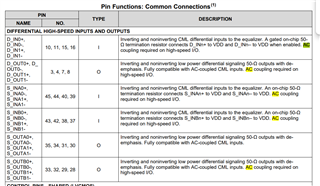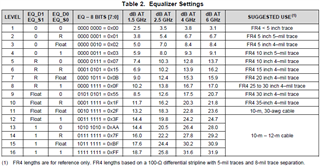Other Parts Discussed in Thread: USB2ANY
Tool/software:
Hi team,
This is Jayden, FAE for ZTE. ZTE is using DS125MB203SQ/NOPB in 5G wireless infrastructure project. And they have some questions for this device when used in 10Gbps serdes link.
- As they don't have resources for SMBus control, so they want to use pin control. Can they use this device to support 10Gbps Serdes link ? What is the default CTLE amplification gain (dB)?
- I find that the mode pin can be configured to support PCLE、10GE、10-KR protocol. If ZTE needs to support other protocols, what should the mode pin be configured to? For example, the CPIR protocol in the communication system.
- Both the input and out need the AC coupling capacitor. What's the recommend value for these two capacitor?

Brs
Jayden




